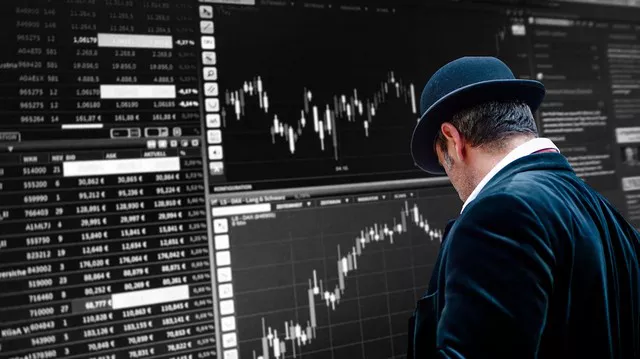Futures transactions play a crucial role in financial markets, offering participants a way to manage risk, speculate on price movements, and hedge against future uncertainties. Understanding how futures contracts operate is essential for investors, traders, and businesses looking to navigate the complexities of commodity, financial, and equity markets. This article delves into the mechanics of futures transactions, exploring their purpose, structure, key participants, and the process involved in executing futures trades.
Purpose and Definition of Futures Contracts
A futures contract is a standardized agreement between two parties to buy or sell a specified asset at a predetermined price on a future date. These contracts are traded on organized exchanges and typically involve commodities like oil, gold, wheat, or financial instruments such as stock indices, currencies, and interest rates. The primary purposes of futures contracts include:
Risk Management: Hedging against price fluctuations to protect against adverse movements in the market.
Price Discovery: Establishing a market-clearing price based on supply and demand dynamics.
Speculation: Leveraging price movements for profit opportunities without owning the underlying asset.
Structure of Futures Contracts
Contract Specifications
Each futures contract has specific terms and conditions agreed upon by the exchange where it trades. These include:
Underlying Asset: The type and quantity of the asset (e.g., 1,000 barrels of crude oil).
Contract Size: The standardized quantity of the asset per contract (e.g., 5,000 bushels of corn).
Delivery Date: The date by which the contract must be settled, often referred to as the expiration date.
Contract Price: The price agreed upon for the transaction, also known as the futures price.
Tick Size: The minimum price movement allowed for the asset.
Margin Requirements: Initial and maintenance margins to secure the contract.
Participants in Futures Transactions
1. Hedgers:
Hedgers use futures contracts to manage risk associated with price volatility in their core business activities. For instance, an airline might hedge against rising fuel costs by buying oil futures contracts.
2. Speculators:
Speculators seek to profit from anticipated price movements in the futures market without having an underlying interest in the physical commodity. They assume market risk in exchange for potential rewards.
3. Arbitrageurs:
Arbitrageurs exploit price differentials between related assets or markets to profit from market inefficiencies. They buy and sell futures contracts simultaneously to lock in profits.
Process of Executing a Futures Trade
1. Opening a Futures Position
a. Selecting a Broker:
Individual traders and institutional investors must first open an account with a futures broker registered with the relevant exchange. The broker acts as an intermediary, executing trades on behalf of clients.
b. Placing an Order:
Traders can place various types of orders, including market orders (executed immediately at the current market price), limit orders (executed only at a specified price or better), and stop orders (executed when the market reaches a specified price level).
2. Managing Margin Requirements
a. Initial Margin:
Upon opening a futures position, traders must deposit an initial margin—a percentage of the contract’s total value—to ensure financial integrity and cover potential losses. Initial margin requirements are set by the exchange and adjusted periodically based on market conditions.
b. Maintenance Margin:
Throughout the life of the contract, traders must maintain a minimum balance known as the maintenance margin. If the account falls below this threshold due to adverse price movements, the trader receives a margin call to restore the account to the initial margin level.
See Also: What Happens When Futures Rise?
3. Marking to Market
a. Daily Settlement:
Futures contracts are marked to market daily, meaning gains and losses are settled daily based on the contract’s current market value. Profits or losses are credited or debited from the trader’s margin account accordingly.
4. Closing Out a Position
a. Offsetting the Contract:
Traders can exit their futures positions by taking an opposite position to the one originally established. For example, a trader who initially sold a futures contract can close out the position by buying an equivalent contract.
b. Physical Delivery or Cash Settlement:
Most futures contracts are closed out before the delivery date through an offsetting trade. However, if held to expiration, physical delivery of the underlying asset may occur (for commodities) or cash settlement based on the contract’s final settlement price (for financial futures).
Risk and Considerations
1. Market Risk:
Futures trading involves substantial risk due to price volatility, leverage, and market uncertainty. Traders may incur significant losses beyond their initial margin deposits.
2. Liquidity Risk:
Trading in illiquid futures contracts can pose challenges, affecting order execution and market exit strategies.
3. Margin Call Risk:
Failure to maintain adequate margin levels can lead to margin calls, requiring additional funds to meet margin requirements or facing position liquidation by the broker.
4. Regulatory and Operational Risks:
Compliance with exchange rules and regulatory oversight is critical. Operational risks include technological failures, connectivity issues, and market disruptions.
Conclusion
Futures transactions are vital instruments in global financial markets, serving diverse purposes ranging from risk management to speculative trading. Understanding the mechanics of futures contracts—from their structure and participants to the process of executing trades—is essential for anyone involved in commodities, financial instruments, or equity trading. By grasping these fundamental concepts, investors and traders can navigate the complexities of futures markets with greater confidence, leveraging opportunities while effectively managing risks associated with price volatility and market uncertainty.


